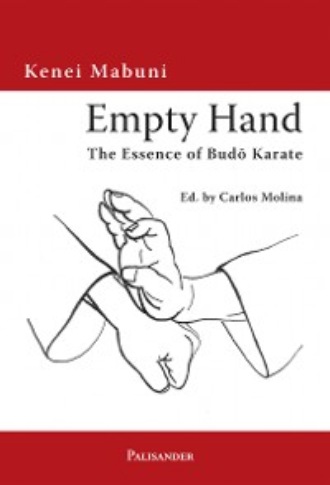
Полная версия
Empty Hand
The Emergence of the Naha-te
The Naha-te is said to originate from a village called Kume41. It was founded by Chinese who came to the Ryūkyū islands from the Fukien province in 1393. This was the time of the Ming empire. Many of their offspring were active in the China trade. From their home province they had brought along kempō knowledge that they obviously passed on to the Kume nobility. What they taught was probably not pure Chinese kempō but a style rather influenced by the Shuri-te and adapted to the conditions of the Ryūkyū islands.
Aragaki Seishō (1840-1920) from Kume – he was later given the name “Aragaki the Cat” – is said to have been one of the greatest martial arts masters. My father, Funakoshi Gichin and Miyagi Chōjun were among his disciples. He not only practiced karate but also bō techniques.
Higaonna Kanryō (1853-1916), too, learned karate from master Aragaki. Higaonna came from a Naha-based family of firewood traders. He learned kempō, which was normally taught only to the Kume nobility, from Aragaki. Higaonna seemed to have been blessed with a special fighting talent. At the age of 15 he traveled to the Fukien province, studied the local kempō and after his return created the Naha-te. That is why the Naha-te is younger than the Shuri-te and the Chinese influence is stronger. My father said about master Higaonna and his karate: “Master Higaonna had been to China and had studied the Fukien kempō. His lessons were different from the ones we are used to today.”
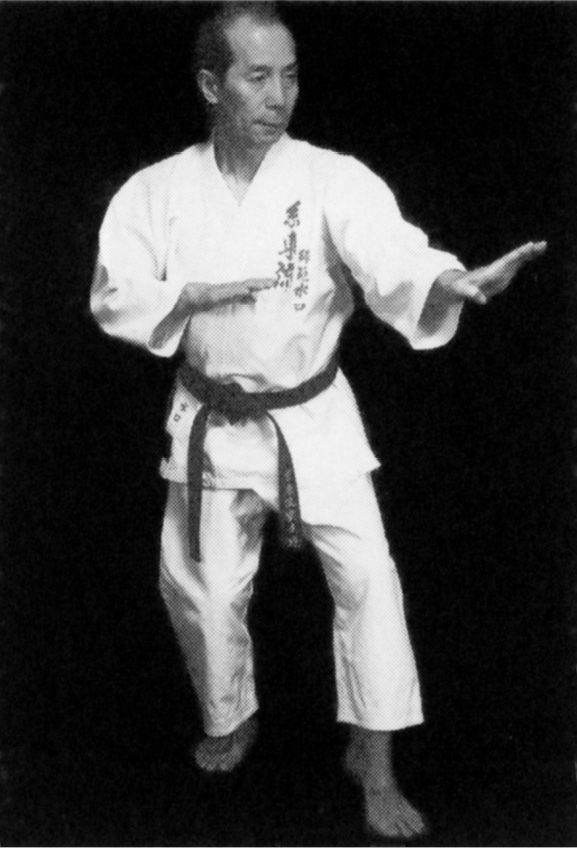
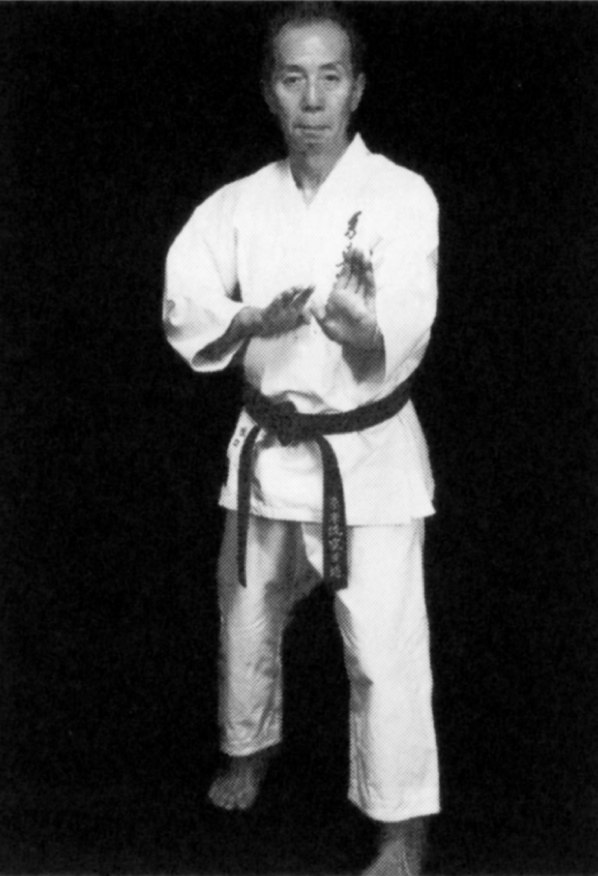
Photos 12 and 13: The hanging or laying hand (kake-te). Photo 12 shows the technique kake-te as practiced in the Shuri-te, and photo 13 represents the same technique as practiced in the Naha-te. See next pages.
Typical for the Shuri-te is distance fighting presupposing an opponent armed with a sword. Naha-te, however, is infighting, based on southern Chinese kempō. There are no thrusts and kicks which are typical elements of distance fighting. Of course Naha-te, too, is not pure kempō. It is influenced by the Shuri-te and adapted to the Okinawan conditions. However, techniques that are called in Chinese kempō “explosive energy” (hakkei) or “power of the moment” (sunkei) are particular for this style. In the Naha-te, these techniques were at first practiced by exercising the “three phases kata” (Sanchin) and “turning-the-palms kata” (Tenshō).
A particularity of the Naha-te is also a breathing technique used to contract all muscles of the body. There is no such exercise in the Shuri-te. In the beginning it is practiced by inhaling and exhaling slowly, and at the same time slowly pulling the fist back to the hip (hikite) and thrusting it forward. Of course in a normal situation blocking and thrusting are carried out much faster.
The above-mentioned expression of the “power of the moment” (sunkei), i.e. “explosive power”, describes the harmony of breathing and action in order to accumulate the inner energies and to contract the whole muscular system of the body and then releasing it “explosively”. Normally this is called kime.
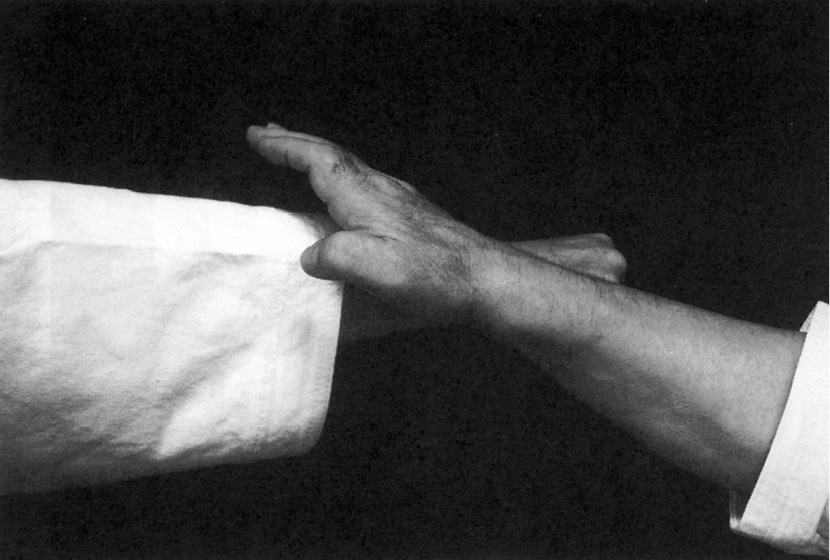
Photo 14: Analysis of the kake te in the Shuri-te: The hand blocks and grabs.
In present-day kata the differences between Shuri-te and Naha-te are hardly recognizable. However, the original styles differ significantly from each other. But there are not only differences with regard to the principles of kicking and thrusting but also to single techniques. The blocking technique “laying or hanging hand” (kake-te)may serve as an example (photos 12 to 15). This technique is used in Shuri-te as well as in Naha-te. But it is used in different ways. Because Shuri-te is distance fighting, the thrusting arm of the opponent is caught in a distance. The laying or hanging of the hand is carried out with a grabbing and pulling movement (photos 12 and 14). In the infight-focused Naha-te, the distance is reduced and the laying of the hand is carried out with the palm being raised deviating the attack with the back of the hand (photos 13 and 15).
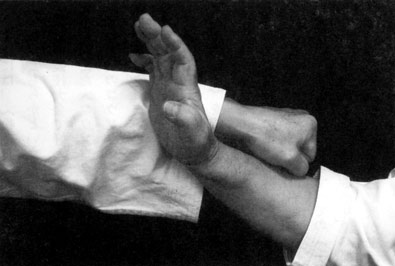
Photo 15: Analysis of the kake te in the Naha-te: The hand blocks and deviates the attack.
The Origins of the Tomari-te
There are no written records about the early Tomari-te but it is said to have been brought to the Ryūkyū Islands by a monk from the Chinese Shandong province called Anan42. Nothing else is known about it. The modern Tomari-te was founded by Matsumora Kōsaku (1829-1898). He is said to have learned it from Teruya Kise (1804-1868) and Uku Karyū (1800-1850), who both were students of Anan. There are a lot of kata in the Itosu style which were named after master Matsumora. Most of them are close to the Shuri-te, some of them similar to the Naha-te.
The Shitō Style as Heritage of the Okinawa-te
Modern karate on the Japanese main islands comprises four major currents: Shōtōkan ryū, Gōjū ryū, Wadō ryū and Shitō ryū . The Shōtōkan style contains parts of the Shuri-te. The Gōjū style teaches only Naha-te. The Wadō style partly includes Shuri-te but rearranged as jūjutsu. The only school to represent all of the Okinawa-te is the Shitō karate.
On Okinawa today there are three major currents: The Shōrin ryū originating from Shuri-te, the Okinawan Gōjū ryū, created on the basis of the Naha-te, and the Uechi ryū, a style derived from southern Chinese kempō. The Uechi style is even closer to the original patterns of Chinese kempō than the Naha-te. Uechi Kanbun (1877-1948) developed the Uechi style after his studies in the Fukien province.
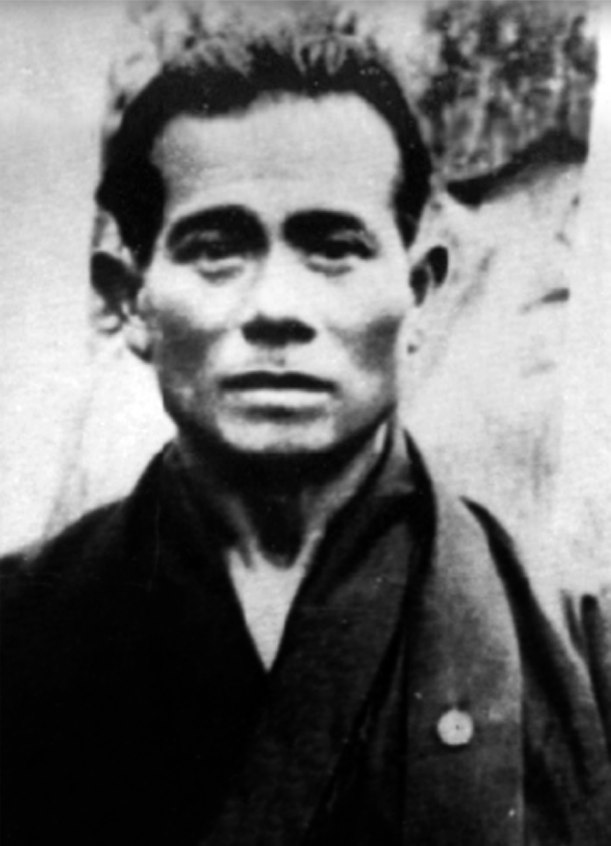
In the early 1920s master Uechi went to mainland Japan and opened a karate club in the Wakayama prefecture where his style was practiced. After my father had come to mainland Japan, he from time to time needed the help of his fellow countrymen in Wakayama and there was a rather intense exchange between my father and master Uechi Kanbun. That is why some of the kata typical for the Uechi style were integrated into the Shitō karate. One is called Shimpā. Because the second half of this kata was missing, I completed it after my father had died.
Uechi Kanei (1911-1991), the son and successor of master Kanbun, lived in Ōsaka close to the Nishinari district where the Okinawa countrymen fellow association had some rooms. I remember that after my arrival in Ōsaka I often visited them in Nishinari; the rooms of the association were also used for regular karate training.
Конец ознакомительного фрагмента.
Текст предоставлен ООО «ЛитРес».
Прочитайте эту книгу целиком, купив полную легальную версию на ЛитРес.
Безопасно оплатить книгу можно банковской картой Visa, MasterCard, Maestro, со счета мобильного телефона, с платежного терминала, в салоне МТС или Связной, через PayPal, WebMoney, Яндекс.Деньги, QIWI Кошелек, бонусными картами или другим удобным Вам способом.



